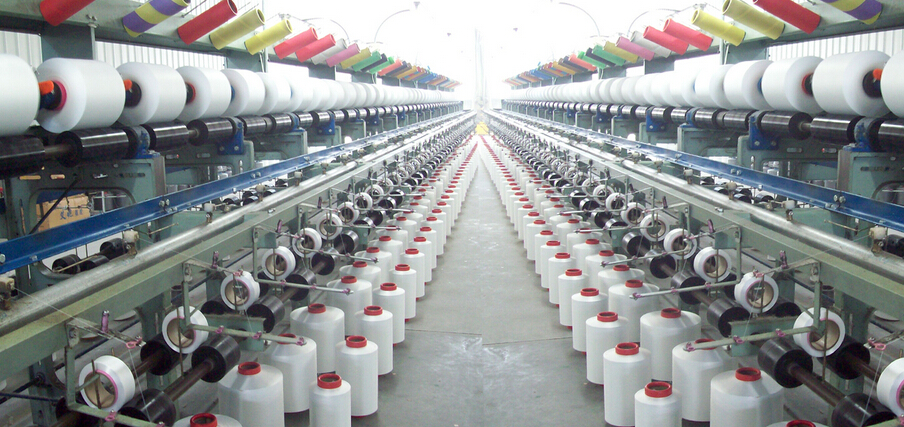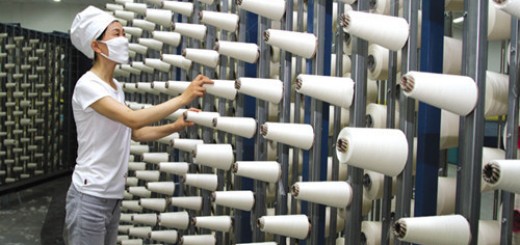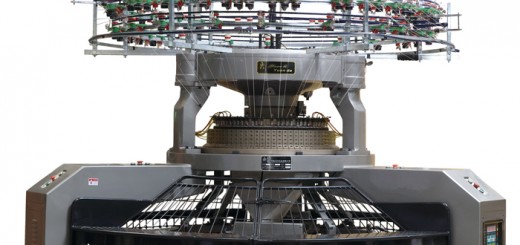
Recently, Chinese textile industry has reduced the purchase amount of cotton. Some insiders announced that the busy season of buying cotton has already passed and the growth of future new order of cotton would be limited. With the continuous increase of new cotton, it is predicted that the price of cotton would still decline in a short period.
First. The reduction of cotton purchase quantity from foreign countries.
It was reported that the import quotas policy on Chinese cotton had been tightened in 2014. Except for the 894,000 tons of quotas, there will be no more import quotas, which make importers and textile enterprises hold back.
It was replied by port traders and domestic textile industries that since November, the amount of foreign cotton in Chinese port continuously declined to 80,000 or 90,000 tons.
According to the recently global cotton supply and demand report released by USDA, the global cotton production of 2014 to 2015 year has increased 52,000 tons, while the consumption has only risen 37.000 tons. The pattern of global cotton supply was still loose and the cotton production was 1,253,000 tons excessed.
In addition, USDA has increased the final stock amount of global cotton to 23,375,000 tons. Under the present situation of globally weak consumption ability, it was estimated that the amount of agreements of ICE would be stressfully dropped.
Second. The domestic cotton quantity has been reduced.
Judging from the production and consumption of Chinese cotton (except for stocks), this year, the production was 1.633 million lower than the consumption, while the production of areas outside China was 2.886 million higher than consumption. The situation of domestic demand and supply was better than international one.
According to the statistics investigated by China Cotton Information website in October, the amount of Chinese cotton production this year was 6.02 million tons, 4.08 tons of which belonged to Xinjiang Province. Influenced by the weather and the implementation of direct subsidies, the consumption situation in the market this year has changed. In Xinjiang Province, the low temperature, raining and frost in October had impact on the production of the north and south Xinjiang. Organizations had great disagreement about the whole production in Xinjiang. The decreasing trend cannot be ignored. The amount of machine picked cotton was predicted to be further increased.
Third. The willingness of textile enterprises to supply stock is not so strong.
It was showed from the newest statistics of WIND that the added value of textile industry in October increased 6.3%, and one percent higher than September. However, according to the increasing trend of the added valve of Chinese textile industry of recent three years, the present added value was still low.
PMI of Chinese Textile industry reached 46.0% in October, 5.8% higher than it was in September. The new orders on October increased, which resulted in the reduction of yarn and gray fabric stock. Orders on waffle check knitted fabrics and cotton knitting fabrics saw an improvement.
At present, the cotton consumption was not strong enough, and the textile company was not so willing to supplement the stock as well. The statistics of China Cotton Information website have showed that the stock of cotton was 482,400 tons by the end of October and realized 4700 tons growth on last month. In the corporations investigated, 36% reduced the stock, while 44% increased. It was learned that on the one hand textile mills have experienced the period without cotton before, and most of them was so short of cotton that they chose new cotton of high quality to supply the stock; on the other hand, during the early period of the new cotton appearance, many textile industries went to Xinjiang to buy cotton of high quality in case that the quality of the cotton appeared later would be poor.
Some analysts thought that as the increasing supply of new cotton, the cotton price might still decrease in a short period. The reduction degree depends on buyers’ willing. It was said that most textile companies were satisfied with the presently price, so it is possible for them to buy cotton.




